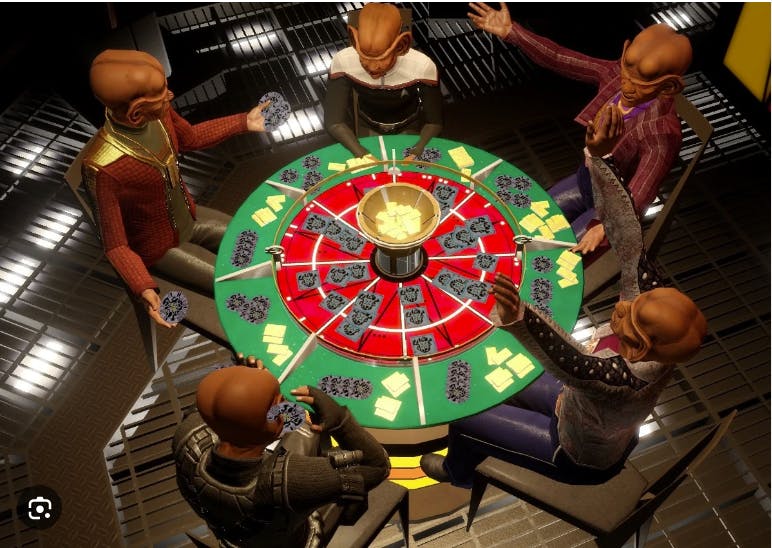Share
Explore
s23 Assignment : NODE JS JavaScript: Build Your Very Own Ferengi Tanga Game
Add the following functionalities:
Tonga is a strategic Ferengi game that is played with a combination of cards and roulette and which was played with two to eight players.
The object of the game is to win by acquiring as many bars of gold-pressed latinum as possible.

Welcome to the NODE JS JavaScript student lab learning workbook!
This guide will teach you the fundamentals of NODE JS and microservices, and how you can use them to create a networked Ferengi Tanga game.
Let's start our exciting journey!
Table of Contents
1. Introduction to NODE JS
2. Understanding Microservices
3. Game Designing: Ferengi Tanga Game
4. Building the Ferengi Tanga Game
Setting up the Project
Building the Game Server
5. Deploying the Game Using Microservices
6. Connecting Players Over Network
Ferengi Tanga game
Server Setup
Game Logic
Microservices
An updated version of the server and client where a user can bet bars of gold-pressed latinum on the game. The user starts with a certain amount of bars and then bets a number of bars each game.
Server Code:
HTML Client: game.html
Version 3 of the Game:
Want to print your doc?
This is not the way.
This is not the way.

Try clicking the ⋯ next to your doc name or using a keyboard shortcut (
CtrlP
) instead.